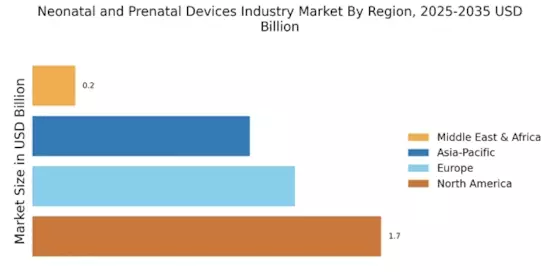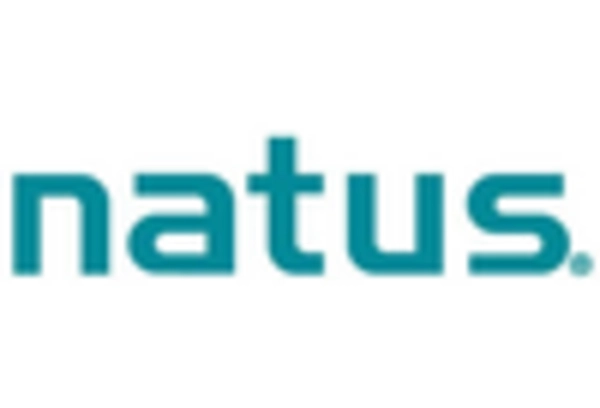Growing Awareness of Prenatal Care
The rising awareness regarding the importance of prenatal care is a significant driver for the Neonatal and Prenatal Devices Industry Market. Educational campaigns and healthcare initiatives are emphasizing the necessity of regular check-ups and the use of advanced prenatal devices to monitor fetal health. This awareness is leading to increased adoption of prenatal diagnostic tools, such as ultrasound and fetal monitoring devices. As more expectant mothers seek comprehensive prenatal care, the demand for these devices is likely to rise. Consequently, the Neonatal and Prenatal Devices Industry Market is poised for growth as healthcare providers expand their offerings to meet the needs of informed patients.
Rising Prevalence of Neonatal Conditions
The increasing incidence of neonatal conditions such as prematurity and congenital disorders is a primary driver for the Neonatal and Prenatal Devices Industry Market. According to recent data, approximately 15 million infants are born preterm each year, leading to heightened demand for specialized neonatal devices. This trend necessitates advanced monitoring and treatment solutions, thereby propelling market growth. The need for effective interventions to manage these conditions is critical, as they can lead to long-term health complications. Consequently, healthcare providers are investing in innovative technologies to enhance neonatal care, which is likely to further stimulate the Neonatal and Prenatal Devices Industry Market.
Regulatory Support for Innovative Devices
Regulatory bodies are increasingly supporting the development and approval of innovative devices in the Neonatal and Prenatal Devices Industry Market. Streamlined approval processes and incentives for manufacturers are encouraging the introduction of cutting-edge technologies. This regulatory environment fosters innovation, allowing for the rapid deployment of new devices that can improve neonatal and prenatal care. For instance, the introduction of expedited pathways for device approval has led to a surge in the availability of advanced monitoring systems. As a result, the Neonatal and Prenatal Devices Industry Market is likely to benefit from this supportive regulatory landscape, facilitating the growth of new and effective medical solutions.
Technological Innovations in Medical Devices
Technological advancements in medical devices are transforming the Neonatal and Prenatal Devices Industry Market. Innovations such as non-invasive monitoring systems, advanced imaging techniques, and telemedicine solutions are enhancing the quality of care for both mothers and infants. For instance, the integration of artificial intelligence in monitoring devices allows for real-time data analysis, improving clinical decision-making. The market for neonatal monitoring devices alone is projected to reach USD 2 billion by 2026, reflecting the growing reliance on technology in healthcare. These advancements not only improve patient outcomes but also drive the demand for new and upgraded devices in the Neonatal and Prenatal Devices Industry Market.
Increased Investment in Maternal and Child Health
There is a notable increase in investment directed towards maternal and child health initiatives, which significantly impacts the Neonatal and Prenatal Devices Industry Market. Governments and private organizations are recognizing the importance of improving health outcomes for mothers and infants, leading to enhanced funding for healthcare infrastructure. This investment is crucial for developing and distributing advanced prenatal and neonatal devices. For example, initiatives aimed at reducing maternal and infant mortality rates are likely to result in a surge in demand for innovative medical devices. As a result, the Neonatal and Prenatal Devices Industry Market is expected to experience substantial growth driven by these funding efforts.



















Leave a Comment